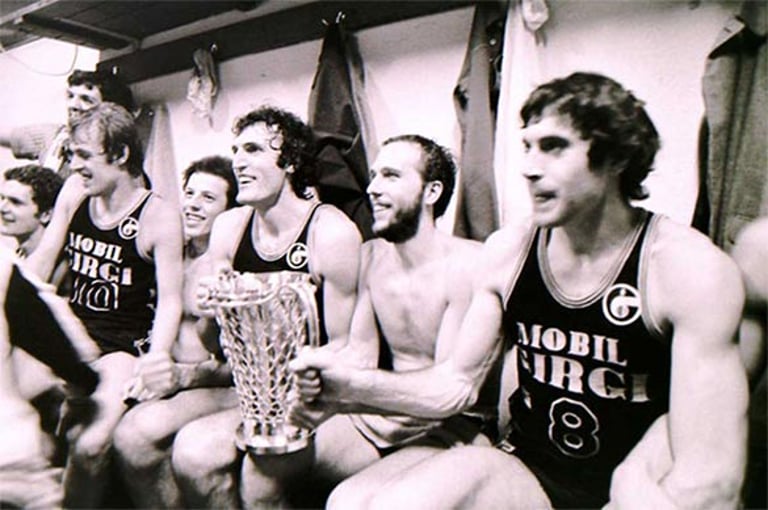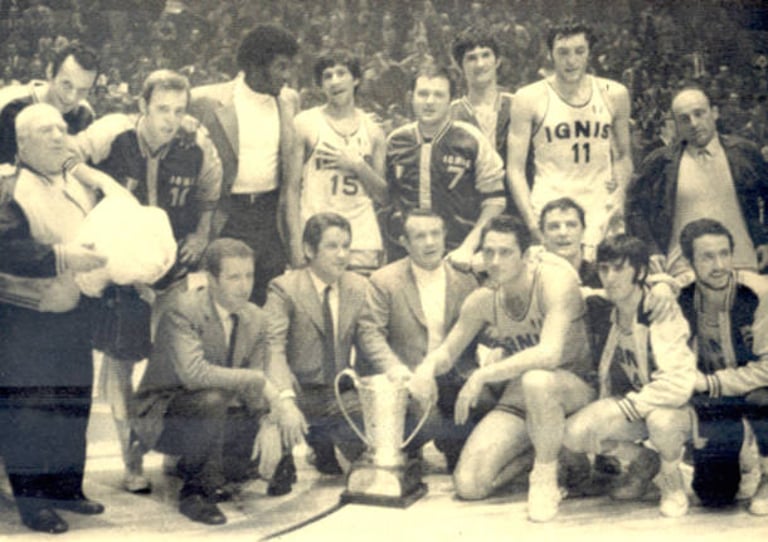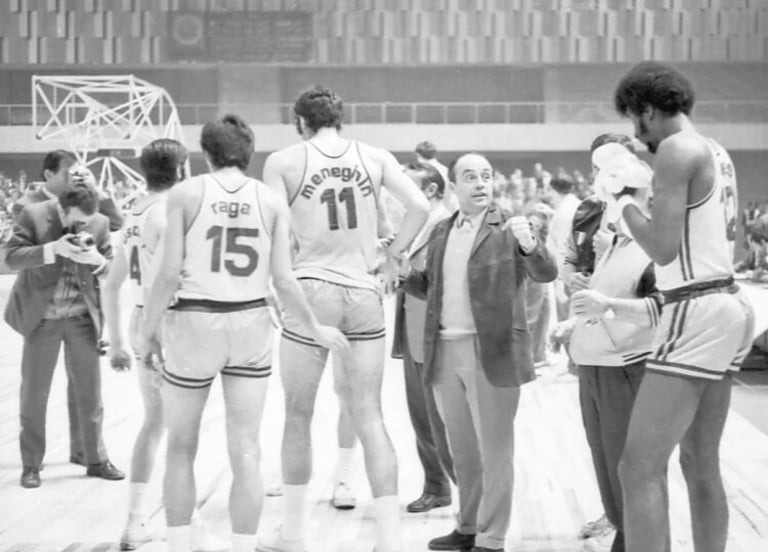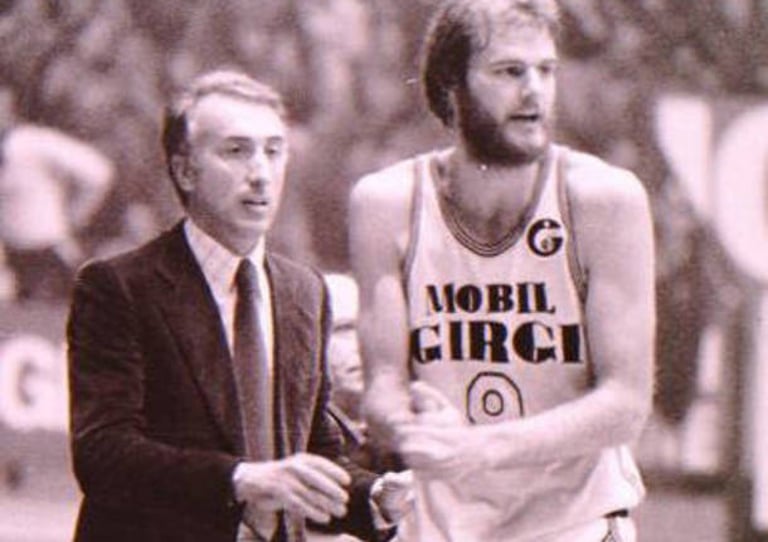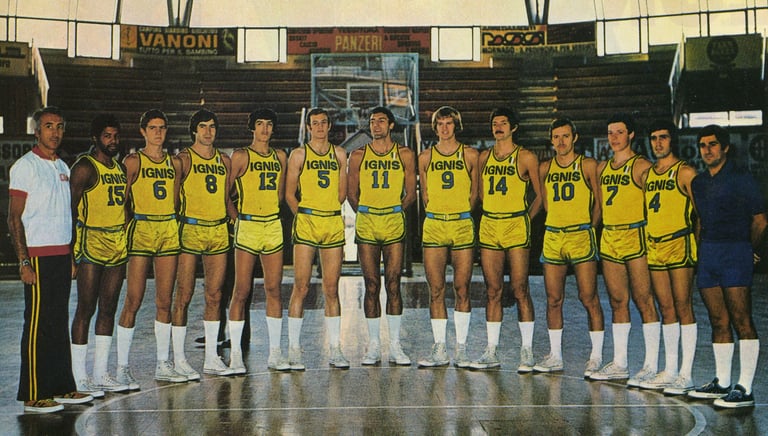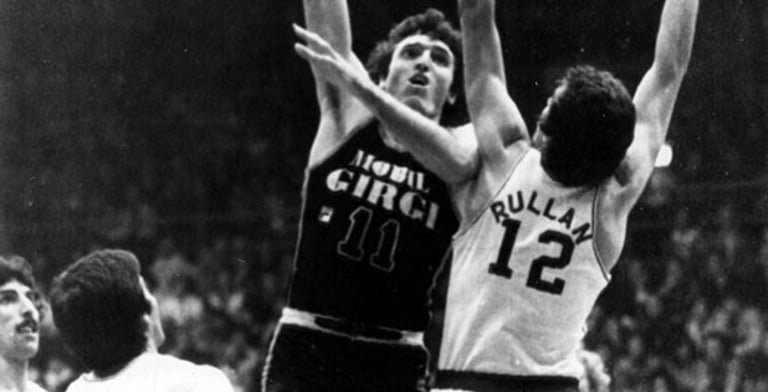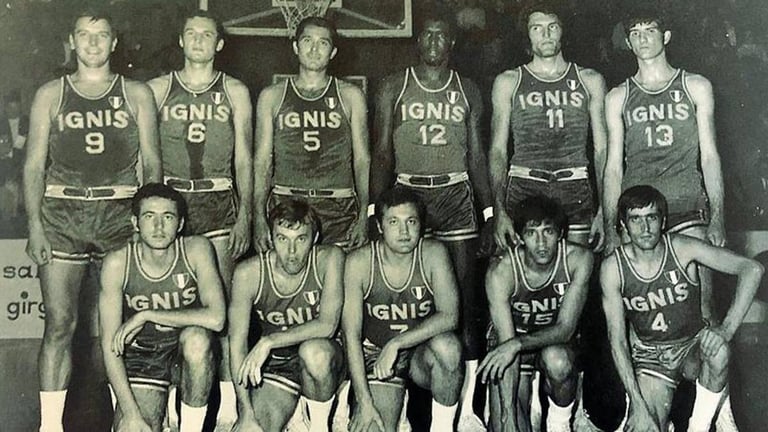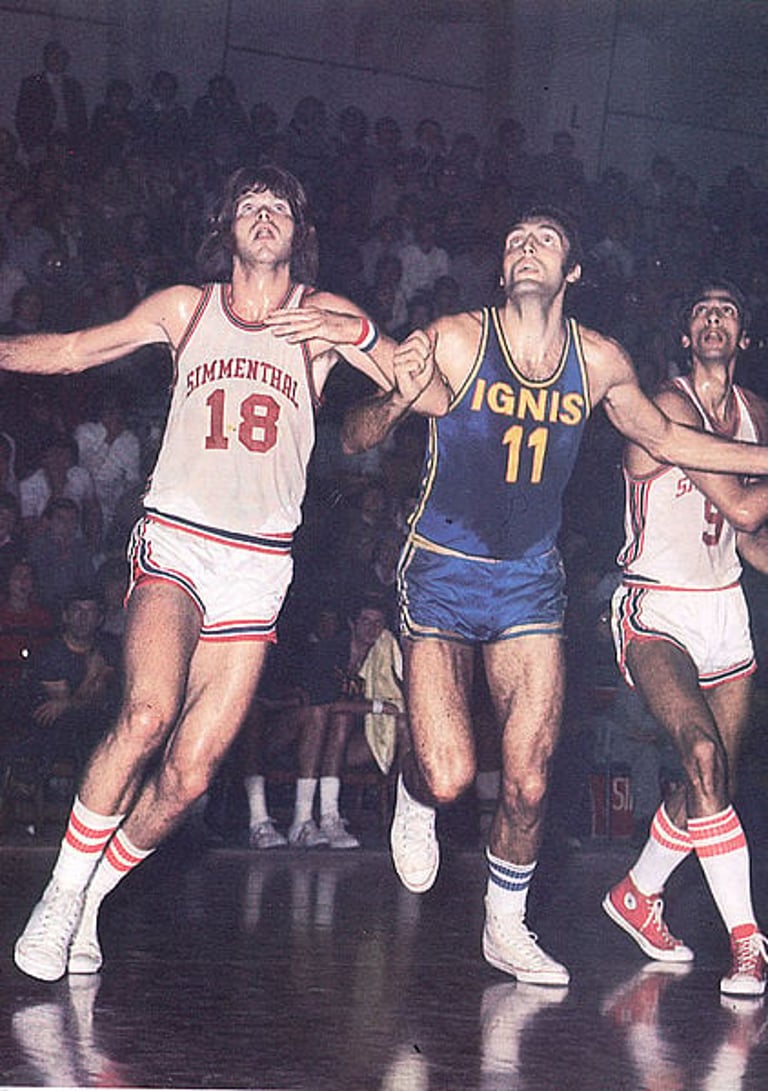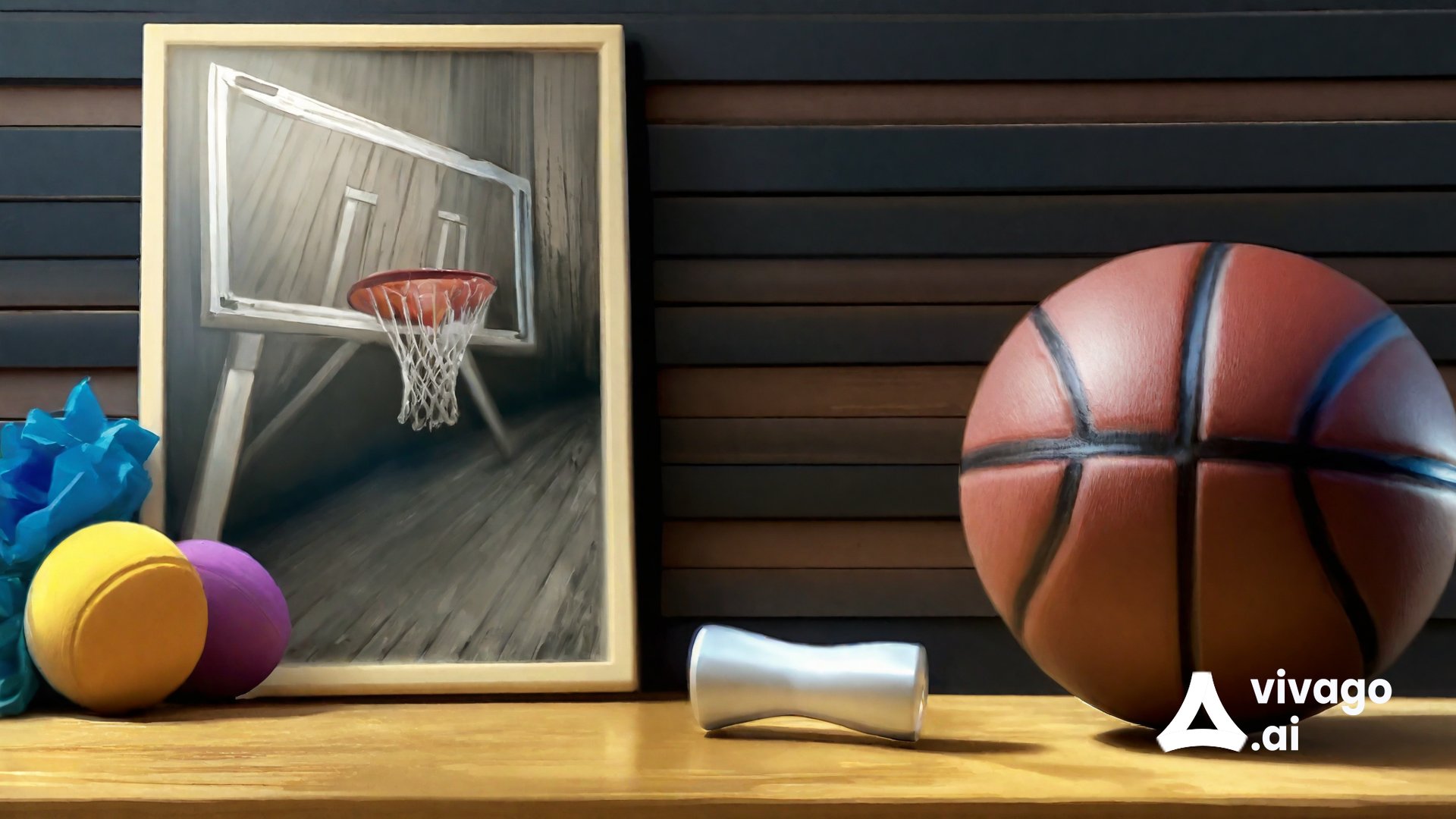
Varese
"A Legend created by a dreamer"
RETROTEAMS
Antreas Tsemperlidis
4/22/20257 min read
"Palasport Lino Oldrini" in the Masnago neighborhood wasn't full that December night in 1999. The many empty seats gave spectators the freedom to sit wherever they pleased. Giuseppe Vittori was holding the hand of his grandson, who, with youthful enthusiasm, tried to warm the cold atmosphere of the arena by clapping at every basket scored by the team. The grandfather didn’t share the young boy’s joy. His mind wandered to times now long past, when the pride of the city made history in European basketball with unrivaled achievements.
Ten consecutive European Cup finals, crowned by five triumphs in pursuit of the 'Holy Grail,' immortalized the heroes of that golden era.
But those years were now long gone. The grandfather looked up toward the VIP seats. He knew that the one he hoped to see was no longer there. He had departed on the “great journey” long ago, but only after seeing his vision come true on the court. Still holding onto hope, he glanced at the bench. For a moment, brief as a blink of an eye, he thought he saw him sitting calmly in his chair, reading the game. But that was impossible. The "Professor" was in a hospital in Belgrade, with only a few months left to live, no longer able to teach basketball in his unique, unsurpassed way. Telling Dino to play harder, Ossola to slow down the tempo, Raga to lead the fast break, Morse to shoot from everywhere, and Flaborea to grab all the rebounds.
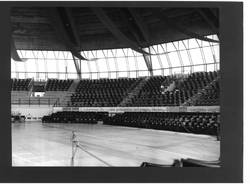

He didn’t need to shout, but whenever he did, he embodied an old Italian saying: "When the leader of the pack bares his teeth, the wolves know whom to follow."
Before the pack went chasing European glory, the dream was "born" in the mind of a true gentleman, a traditional sports administrator. His name was Giovanni Borghi, or as everyone in Lombardy called him, "il Cumenda" - the leader. Borghi was born in nearby Milan and worked from a young age in his self-made father’s electrical appliance workshop. The store was completely destroyed in the 1943 bombing of Milan, and after the war, the family decided to move to nearby, picturesque Varese. In a post-WWII Italy that literally needed everything, there were many opportunities for entrepreneurship. The Borghi family founded an electrical appliance factory staffed exclusively by locals, thus earning the appreciation and respect of the community. The company was named "Ignis", and it would become synonymous with the basketball team that, as if to confirm its sponsor, would light-up European courts in the years to come.
Varese had been a well-known club in Italian basketball circles since the 1940s. By the early 1950s, it was a first-division mainstay, pioneering in other ways too - one of the first teams to have a sponsor (the clothing company Storm). It was during that era that rivalries with another Lombardy symbol, Olimpia Milano, began. Some of those derbies even featured a Greek connection. The first Greek was a student-athlete in Italy. Coming from Aris Thessaloniki, Antonis Flokas played for four seasons (1953–57) in Varese’s red and white. For one season (1955–56), he had as both teammate and coach the Greek whom Italian women, impressed by his masculinity, called "Deus Greco". For us, he was the "Patriarch" of Greek basketball, our beloved Faidon Matthaiou. He was unlucky though, as the year he returned to Greece marked the beginning of an era-defining agreement.
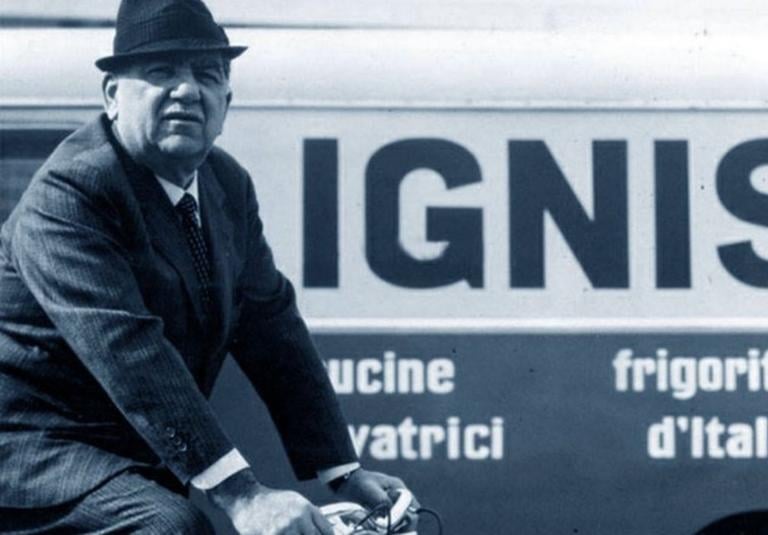

Giovanni Borghi, who had already invested in other sports, decided to support basketball too, creating a bond that became legendary and lasted 19 years. With blue and yellow as the new team colours, Varese began its journey to glory. Under coach Enrico Garbosi, the team won its first trophy, the 1961 championship. Remaining loyal to the doctrine of building with local talent, they added a cerebral point guard: Aldo Ossola, who, apart from a brief loan, was the mastermind of the club’s major successes. More local stars would follow. At first, Rusconi followed by the slightly older Flaborea, arriving between 1964 and 1967. Coach Vittorio Tracuzzi, who replaced Garbosi in 1966, would see the arrival two years later of the "Flying Mexican" Manuel Raga in Varese. His successor, however, would be the one to assemble the team and discover the “totem” of Italian basketball. Nico Messina was coaching Ignis’ youth teams in 1963 when he spotted a young boy during a children's tournament. He approached and asked for the boy’s name and age, but shockingly for him upon asking if the boy had played basketball before, the answer was no. Surprised but calm, Messina asked the kid soon after to try some drills. He then proceeded to tell him to show up the next day with a pair of basketball shoes. The young boy ran home, begged his mother for the shoes, and she -thankfully for basketball- agreed. But she had one question: "Dino, what is basketball?"
Three years later, on November 20, 1966, at his debut, Dino’s mother clapped emotionally. She had learned what basketball was - and just how incredibly talented her son really was.
Soon, all of Europe would know. The first warning came in April 1967 in the Cup Winners’ Cup finals. Despite a narrow 10-point win in the first leg, Varese held on in the second leg in Tel Aviv’s Yad Eliyahu arena and lifted the inaugural FIBA trophy. They tried to defend the title, but were halted by AEK Athens, led by Giorgos Trontzos, whose final-second shot gave AEK the 20-point win they needed to overturn the first-leg loss. The decade closed with Varese reclaiming the Italian league title in 1969, and everyone believed European dominance was within reach. Though Messina had helped build and develop the youth, it was clear Varese needed a new captain for the next voyage.
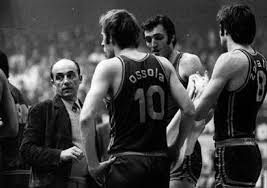
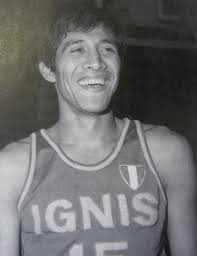
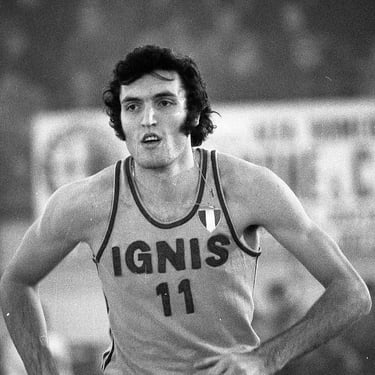
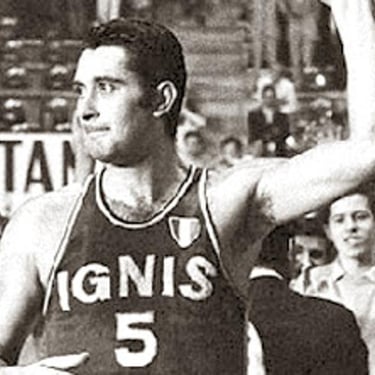
Borghi handed over the reins to “Il Professore” Aleksandar “Aca” Nikolić, architect of Yugoslavia’s basketball dynasty. Nikolić was a tough coach, a true teacher, a basketball prophet who could impart deep fundamentals that translated flawlessly on the court. He focused intensely on conditioning, with players running up and down Lombardy’s hills until they collapsed. Bob Morse recalled the gruelling practices and Nikolić’s tactical obsession, but always considered him a tactical genius and a fair man. He was the leader the pack needed to mature from cubs to wolves and chase glory. When Aca arrived in Varese, Borghi asked for the European Cup. Nikolić simply said: "Okay, it will be done". What he didn’t say was that he would proceed to build a dynasty. The foundation was laid on April 9, 1970, in Sarajevo—his homeland. At Skenderija Hall, Ottorino Flaborea lifted the coveted trophy with joy. The Soviets of CSKA Moscow could not withstand Nikolić’s hungry squad, surrendering the throne to Europe’s rising power. The next year, in Antwerp, CSKA reclaimed the title in a final marked by coach Gomelsky’s "enforced" absence and player-coach Sergei Belov taking the reins. But in 1972, Varese came back, this time to Yad Eliyahu, a court filled with good memories. Facing Jugoplastika (a future dynasty-in-the-making), they won again despite the strong resistance of the Yugoslavian team. In 1973, they defended their title, with Bob Morse -the "Blond Angel"- joining "El Inca" Manuel Raga and forming a terrifying duo. In the 1970 final rematch in Liège, Varese triumphed once more. Thus ended the Nikolić era, as he left for Crvena Zvezda.
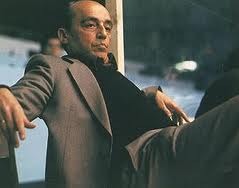

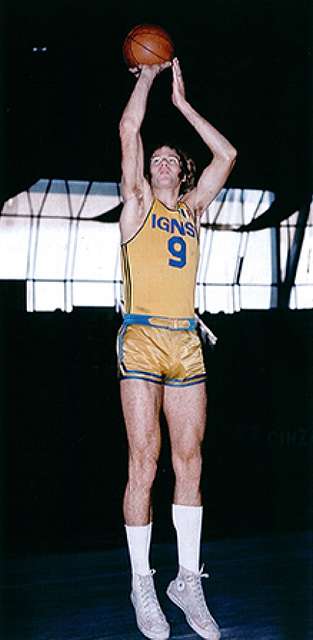

His successor was assistant coach for rivals Olimpia Milano. Sandro Gamba, who was given the head coach position upheld the heavy legacy, winning the domestic title and reaching another European final. Real Madrid blocked his first attempt in the unsuitable Nantes arena. But in 1975, in Antwerp, he avenged the Spaniards in style. 1975 marked change - Raga left for Switzerland, Meneguin was injured, and Charlie Yelverton, the "Greek", stepped in. Despite challenges, Ignis claimed its last European title, with the iconic sponsor’s name appearing for the last time on their jersey. Giovanni Borghi passed away on September 25, 1975, and with him ended the deep connection between his company and team. With a name steeped in history, a new sponsor was easily found - Mobilgirgi, an automotive company. As Mobilgirgi Varese, would win their final European Cup. The team aged, but the fire still flickered. Two more European Final appearances in 1977 and 1978 were the last sparks before the swan song. The curtain call came on April 5, 1979, in Grenoble, against Bosna Sarajevo. The Italians were defeated with a score of 96-93, and Bosna Sarajevo -led by Tanjević, Delibašić, Radovanović, and the 45-point hero Žarko Varajić- merged as the new champions of Europe.
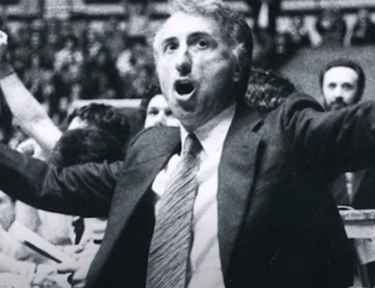

Varese, the team that defined basketball in the 1970s, left the court in defeat, but with heads held high. After all, the greatness of the vanquished only amplifies the glory of the victor - and Varese’s greatness was undeniable. So great, in fact, that it enabled them to dominate European basketball for an entire decade. Their achievement was no minor feat, considering that era overlapped with the golden generation of Yugoslav basketball, the mighty CSKA Moscow of Belov and Gomelsky, and the legendary Real Madrid of Brabender and Luyk. But this club was forged in steel. It thrived in a more romantic time -so unlike today's era- when the sport was seen through a different lens, and one man's dream could still take shape and come to life. The pride of a small provincial town, one that many might have dismissed as a village, rose to become a European superpower. Could such a story unfold again in today’s age of ruthless professionalism? Unlikely, perhaps, but not impossible.
All it would take is another Giovanni Borghi: a man with vision, a pioneer, a realist who never forgot his roots. On the contrary, he nurtured them. And those roots became a tree whose branches stretched far and wide, sheltering his “children” and giving them space to build their myth. The myth of Varese.
